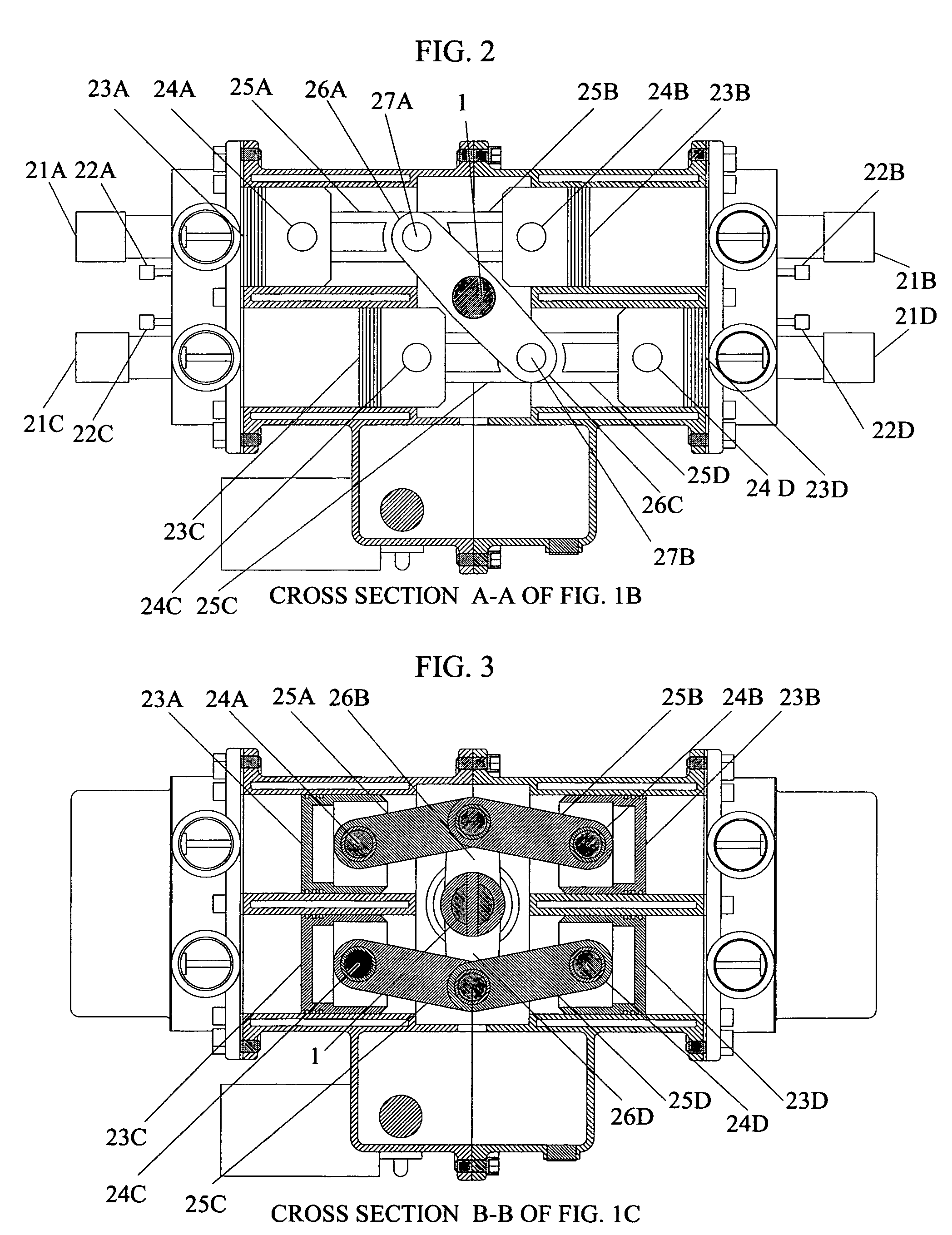Four-cylinder, four-cycle, free piston, premixed charge compression ignition, internal combustion reciprocating piston engine with a variable piston stroke
a reciprocating piston and internal combustion technology, applied in the field of engines, can solve the problems of inability to adjust the engine's engine speed, the engine's four-cycle pcci engine, and the limited throttle turn down, so as to improve the efficiency of the fpfs engine, reduce emissions and fuel flexibility, and reduce the effect of fuel consumption
- Summary
- Abstract
- Description
- Claims
- Application Information
AI Technical Summary
Benefits of technology
Problems solved by technology
Method used
Image
Examples
Embodiment Construction
[0097]Facilitating premixed charge compression ignition in an internal combustion reciprocating piston engine, with the objective of improving engine efficiency and lowering emissions—while avoiding the complexities, sensitivities and cost penalties of existing PCCI / HCCI designs—are the criteria for using the four-cycle, four-cylinder, free piston engine configuration for this invention. The application of PCCI / HCCI to a four-cycle, four-cylinder, free piston engine is unique. As will be disclosed herein, there are multiple engine geometries that can achieve the previously cited objectives, and provide various embodiments of the present invention. Thus, FIGS. 1-10 and FIGS. 16-20 illustrate a number of preferred embodiments of the present invention with varying piston arrangements and power extraction strategies. FIGS. 1-7 show a “flat” four-cylinder block 2, with the pistons 23, connected via connecting rods 25, of varying types, to a pivot shaft 1, which provides for direct power ...
PUM
 Login to View More
Login to View More Abstract
Description
Claims
Application Information
 Login to View More
Login to View More - R&D
- Intellectual Property
- Life Sciences
- Materials
- Tech Scout
- Unparalleled Data Quality
- Higher Quality Content
- 60% Fewer Hallucinations
Browse by: Latest US Patents, China's latest patents, Technical Efficacy Thesaurus, Application Domain, Technology Topic, Popular Technical Reports.
© 2025 PatSnap. All rights reserved.Legal|Privacy policy|Modern Slavery Act Transparency Statement|Sitemap|About US| Contact US: help@patsnap.com



